The NVIDIA GeForce GTX 980 Ti Review
by Ryan Smith on May 31, 2015 6:00 PM ESTNVIDIA's Computex Announcements & The Test
Alongside the launch of the GTX 980 Ti, NVIDIA is also taking advantage of Computex to make a couple of other major technology announcements. Given the scope of these announcements we’re covering these in separate articles, but we’ll quickly go over the high points here as they pertain to the GTX 980 Ti.
G-Sync Variable Overdrive & Windowed Mode G-Sync
NVIDIA is announcing a slew of G-Sync products/technologies today, the most important of which is Mobile G-Sync for laptops. However as part of that launch, NVIDIA is also finally confirming that all G-Sync products, including existing desktop G-Sync products, feature support for G-Sync variable overdrive. As the name implies, this is the ability to vary the amount of overdrive applied to a pixel based on a best-effort guess of when the next frame will arrive. This allows NVIDIA to continue to use pixel overdrive on G-Sync monitors to improve pixel response times and reduce ghosting, at a slight cost to color accuracy while in motion from errors in the frame time predictions.
Variable overdrive has been in G-Sync since the start, however until now NVIDIA has never confirmed its existence, with NVIDIA presumably keeping quiet about it for trade secret purposes. However now that displays supporting AMD’s Freesync implementation of DisplayPort Adaptive-Sync are out, NVIDIA is further clarifying how G-Sync works.
Meanwhile being freshly rolled out in NVIDIA’s latest drivers is support for Windowed Mode G-Sync. Before now, running a game in Windowed mode could cause stutters and tearing because once you are in Windowed mode, the image being output is composited by the Desktop Window Manager (DWM) in Windows. Even though a game might be outputting 200 frames per second, DWM will only refresh the image with its own timings. The off-screen buffer for applications can be updated many times before DWM updates the actual image on the display.
NVIDIA will now change this using their display driver, and when Windowed G-Sync is enabled, whichever window is the current active window will be the one that determines the refresh rate. That means if you have a game open, G-Sync can be leveraged to reduce screen tearing and stuttering, but if you then click on your email application, the refresh rate will switch back to whatever rate that application is using. Since this is not always going to be a perfect solution - without a fixed refresh rate, it's impossible to make every application perfectly line up with every other application - Windowed G-Sync can be enabled or disabled on a per-application basis, or just globally turned on or off.
GameWorks VR & Multi-Res Shading
Also being announced at Computex is a combination of new functionality and an overall rebranding for NVIDIA’s suite of VR technologies. First introduced alongside the GeForce GTX 980 in September as VR Direct, NVIDIA will be bringing their VR technologies in under the GameWorks umbrella of developer tools. The collection of technologies will now be called GameWorks VR, adding to the already significant collection of GameWorks tools and libraries.
On the feature front, the newly minted GameWorks VR will be getting a new feature dubbed Multi-Resolution Shading, or Multi-Res Shading for short. With multi-res shading, NVIDIA is looking to leverage the Maxwell 2 architecture’s Multi-Projection Acceleration in order to increase rendering efficiency and ultimately the overall performance of their GPUs in VR situations.
By reducing the resolution of video frames at the edges where there is already the most optical distortion/compression and the human eye is less sensitive, NVIDIA says that using multi-res shading can result in a 1.3x to 2x increase in pixel shader performance without noticeably compromising the image quality. Like many of the other technologies in the GameWorks VR toolkit this is an implementation of a suggested VR practice, however in NVIDIA’s case the company believes they have a significant technological advantage in implementing it thanks to multi-projection acceleration. With MPA to bring down the rendering cost of this feature, NVIDIA’s hardware can better take advantage of the performance advantages of this rendering approach, essentially making it an even more efficient method of VR rendering.
Getting Behind DirectX Feature Level 12_1
Finally, though not an outright announcement per-se, from a marketing perspective we should expect to see NVIDIA further promote their current technological lead in rendering features. The Maxwell 2 architecture is currently the only architecture to support DirectX feature level 12_1, and with DirectX 12 games due a bit later this year, NVIDIA sees that as an advantage to press.
For promotional purposes NVIDIA has put together a chart listing the different tiers of feature levels for DirectX 12, and to their credit this is a simple but elegant layout of the current feature level situation. The bulk of the advanced DirectX 12 features we saw Microsoft present at the GTX 980 launch are part of feature level 12_1, while the rest, and other functionality not fully exploited under DirectX 11 are part of the 12_0 feature level. The one exception to this is volume tiled resources, which is not part of either feature level and instead is part of a separate feature list for tiled resources that can be implemented at either feature level.
The Test
The press drivers for the launch of the GTX 980 Ti are release 352.90, which other than formally adding support for the new card is otherwise identical to the standing 352.86 drivers.
| CPU: | Intel Core i7-4960X @ 4.2GHz |
| Motherboard: | ASRock Fatal1ty X79 Professional |
| Power Supply: | Corsair AX1200i |
| Hard Disk: | Samsung SSD 840 EVO (750GB) |
| Memory: | G.Skill RipjawZ DDR3-1866 4 x 8GB (9-10-9-26) |
| Case: | NZXT Phantom 630 Windowed Edition |
| Monitor: | Asus PQ321 |
| Video Cards: | AMD Radeon R9 295X2 AMD Radeon R9 290X AMD Radeon HD 7970 NVIDIA GeForce GTX Titan X NVIDIA GeForce GTX 980 Ti NVIDIA GeForce GTX 980 NVIDIA GeForce GTX 780 Ti NVIDIA GeForce GTX 780 NVIDIA GeForce GTX 680 NVIDIA GeForce GTX 580 |
| Video Drivers: | NVIDIA Release 352.90 Beta AMD Catalyst Cat 15.5 Beta |
| OS: | Windows 8.1 Pro |


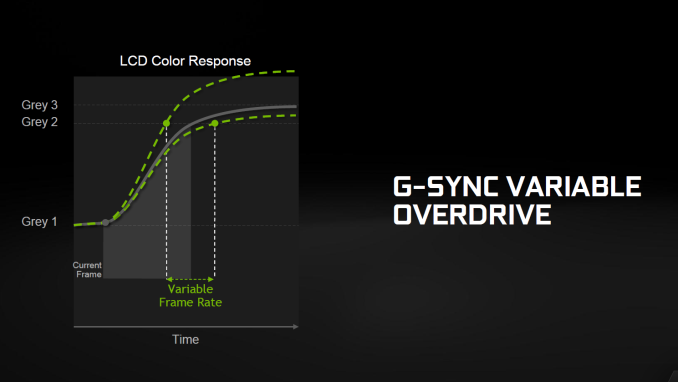
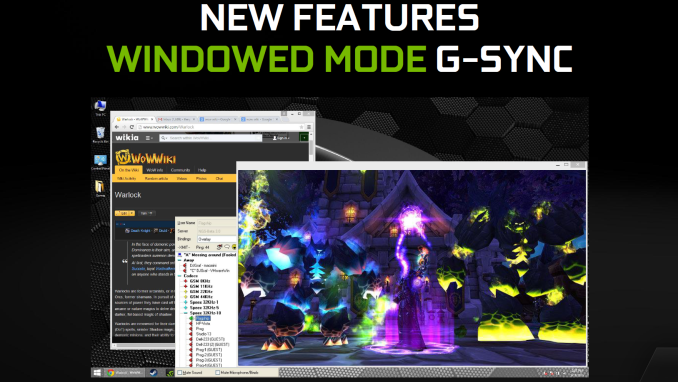
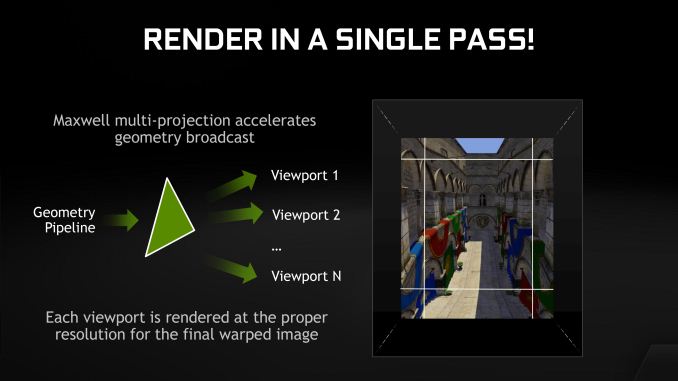
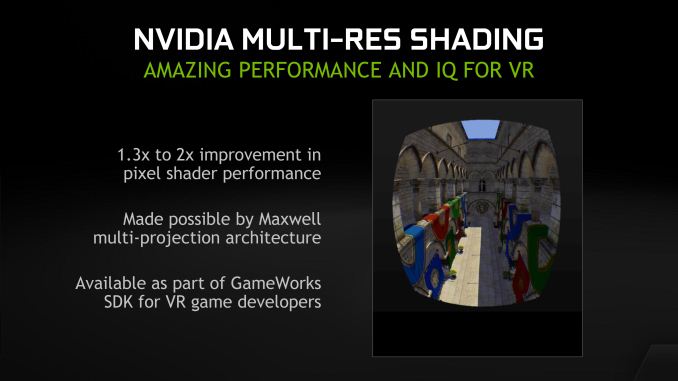
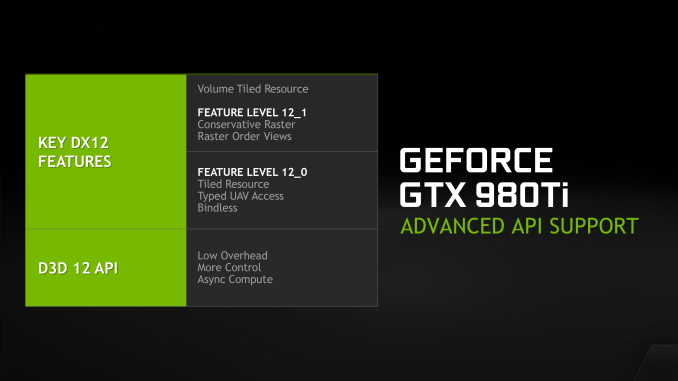








290 Comments
View All Comments
douglord - Monday, June 1, 2015 - link
I need to know if the 980ti can output 10-bit color correctly? Is it ready for UHD Blueray?dragonsqrrl - Monday, June 1, 2015 - link
To my knowledge only Quadro's and Firepro's output 10 bit color depth.johnpombrio - Monday, June 1, 2015 - link
Any card that can do true RGB color schemes are NOT MEANT for normal users. It brings a lot of drawbacks for games and normal tasks. These type of cards are for graphics professionals only. Google it to see why.mapesdhs - Wednesday, June 3, 2015 - link
Indeed, the way colourspaces interact with different types of monitor can result in some nasty issues for accurate colour presentation. For home users, it's really not suitable since so many normal apps & games aren't written to utilise such modes correctly. Besides, I doubt any 4K TVs could properly resolve 10bis/channel anyway. Funny though that people are still asking about 10bit colour when pro users were already using 12bit more than 20 years ago. :D Also 16bit greyscale for medical/GIS/etc.johnpombrio - Monday, June 1, 2015 - link
Yikes! That overclock ability! I always buy EVGA's superclocked NVidia cards as they as super stable and have great benchmarks (as well as playing games well, heh). I might buy into this even tho I have a GTX980.As for AMD, NVidia has 76% of the discrete GPU graphics card market (and still rising) while AMD has lost 12% market share in the last 12 months alone. Whatever AMD has up for new products, it better hurry and be a LOT better than NVidia cards. AMD has tried the " rebadge existing GPU family cards, reduce its price, and bundle games" for too long and IT IS NOT WORKING. C'mon AMD, get back into the fight.
mapesdhs - Wednesday, June 3, 2015 - link
True, I kept finding EVGA's cards work really well. The ACX2 980 (1266MHz) is particularly good.Nfarce - Monday, June 1, 2015 - link
Well I recently upgraded with a second 970 for SLI for 1440p gaming and have them overclocked to 980 performance. It's roughly 15% faster than this single card solution for $700 vs. $650 (7.5% increase in cost). But one thing is for certain: we are still a long time away from realistic 4K gaming with a G-sync 120Hz monitor when those come out. I would much prefer 1440p gaming with max quality and high AA settings and faster FPS matched to screen Hz than detuned 4K settings (even if AA is less meaningful at 2160p).By the way: are you guys ever going to add Project Cars to your benchmarks? It has rapidly become THE racer to own. Grid Autosport is not really a good benchmark these days because it's just a rehash of the Grid 2 engine (EGO 3.0)...easy on GPUs. Many, including me, haven't touched Autosport since PCars was released and may never touch it again.
mapesdhs - Wednesday, June 3, 2015 - link
Project Cards is one game that runs badly in CF atm (driver issues), which would make the 295x2 look horrible. Might be better to wait until AMD has fixed the issue first.agentbb007 - Monday, June 1, 2015 - link
A GTX Titan X for $649, DOH BART! Oh well I've enjoyed my SLI Titan X's for a few months so I guess that was worth the $700 premium. I keep falling for nVidia's Titan brand gimmick, I also bought the original Titan luckily just 1 of them and ended up selling it for about half what I paid.Lesson learned, AGAIN, don't buy the Titan brand wait for the regular GTX version instead.
mapesdhs - Tuesday, March 12, 2019 - link
2019 calling! I wonder if he bought the 2080 Ti or RTX Titan... :}